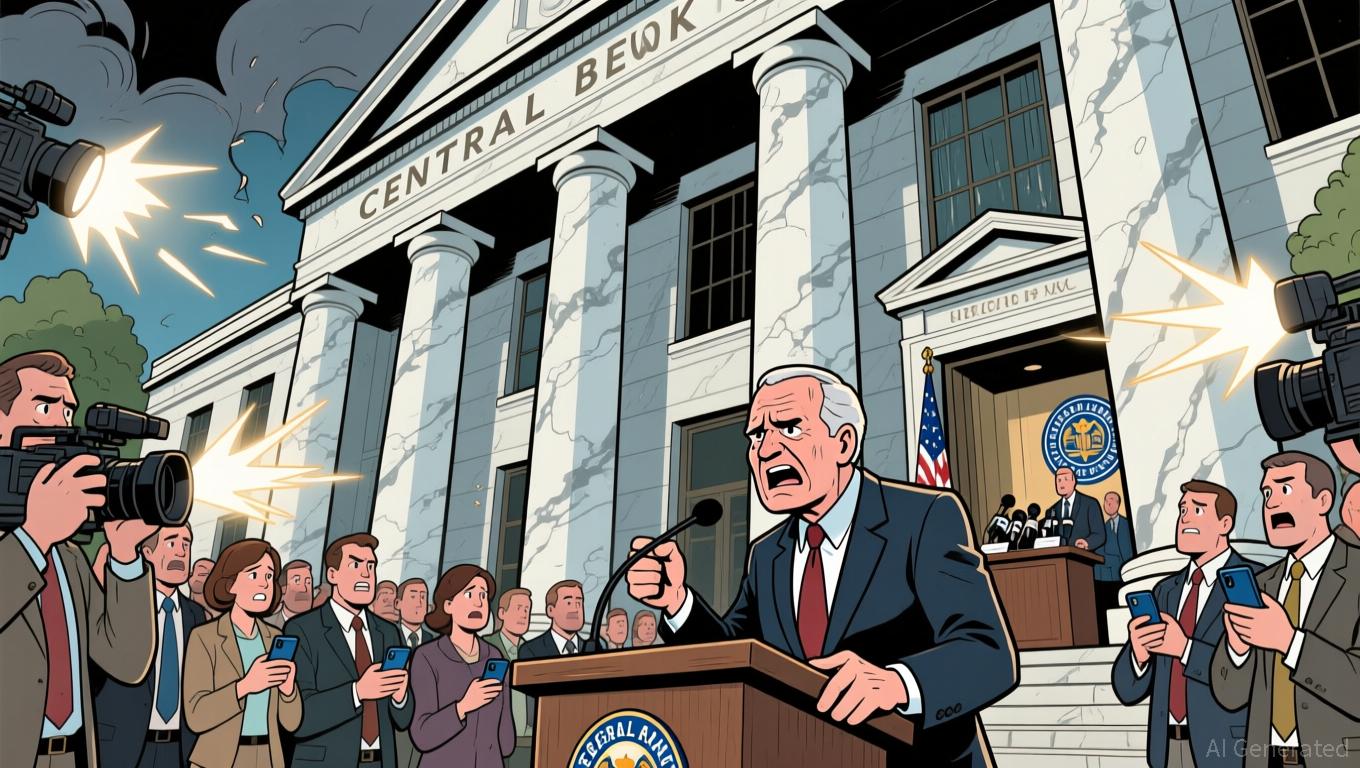Fed's Split Opinions and Incomplete Data Obscure Prospects for Rate Reduction
- Fed's December rate cut odds drop to 39.6% due to missing October jobs data and inflation uncertainty. - Market jitters rise as gold falls, dollar strengthens, and crypto faces pressure amid policy uncertainty. - Fed factions debate inflation control vs labor support, with CME pricing 44% chance of 25-basis-point cut. - Central bank plans to end quantitative tightening in December, but data gaps complicate policy calibration. - 2026 may see slower easing cycle as investors monitor November payrolls and F
The likelihood of the Federal Reserve lowering rates by 25 basis points in December has dropped sharply to 39.6%,
These shifting expectations have already unsettled the markets. Gold, often seen as a safe investment, has fallen for three straight sessions as traders adjust their outlook on rate cuts and the U.S. dollar strengthens once again
There is also internal disagreement within the Fed. Three main groups—doves, hawks, and moderates—are debating how to balance inflation management with supporting the job market. Recent remarks from officials like Cleveland Fed President Beth Hammack have

Market participants are also watching how the Fed’s approach to quantitative easing is evolving. The central bank has indicated it will wrap up quantitative tightening in December and begin new bond purchases in January, a move expected to lift risk assets and further boost equities. However,
The impact of these developments is being felt across global financial markets. The U.S. Dollar Index has risen to 99.51,
As the Fed nears its final policy meeting of 2025,
Disclaimer: The content of this article solely reflects the author's opinion and does not represent the platform in any capacity. This article is not intended to serve as a reference for making investment decisions.
You may also like
Bitcoin News Update: Dalio Limits Bitcoin Holdings to 1% Due to Traceability and Quantum Threats
- Ray Dalio maintains a 1% Bitcoin allocation but doubts its viability as a global reserve asset due to traceability and quantum computing risks. - He favors gold over Bitcoin for its physical tangibility and resistance to digital vulnerabilities, while advising up to 15% portfolio exposure to "hard currencies." - Quantum threats and recent market corrections (32% drop from October 2025 highs) highlight Bitcoin's instability, with institutional ownership rising to 28% amid ETF adoption. - Dalio's cautious

Examining the Drivers and Long-Term Viability of DASH’s Surge Amidst a Fluctuating Cryptocurrency Market
- Dash (DASH) cryptocurrency surged 50% in November 2025, driven by privacy features and real-world adoption in emerging markets. - Hybrid proof-of-work/stake consensus and instant transactions attracted investors amid regulatory scrutiny of transparent blockchains. - Market dynamics included $2B trading volume and renewed interest in privacy coins, though Bitcoin's decline highlighted crypto market volatility. - Sustainability concerns include regulatory risks for privacy coins, competition from newer pro
Vitalik Buterin's Latest ZK Update and Its Influence on the Cryptocurrency Landscape
- Vitalik Buterin's removal of Ethereum's modexp precompile optimizes ZK scalability, prioritizing long-term throughput over short-term gas efficiency. - Integrating ZK proofs with MPC and FHE enhances DeFi privacy, enabling secure voting and private transactions while maintaining regulatory compliance. - Institutional adoption of ZK infrastructure accelerates, with projects like Succinct Labs securing $55M to build enterprise-grade solutions for cross-chain interoperability. - ZK rollups like StarkNet and
Vitalik Buterin Backs ZKsync: What This Means for the Evolution of Layer 2 Scaling
- ZKsync gains momentum in 2025 via Atlas/Fusaka upgrades, Vitalik Buterin's endorsement, and 15,000 TPS throughput. - It captures 15% L2 TVL market share with cost-effective zk-rollups ($0.01/tx) and EVM compatibility, trailing Arbitrum (45%) and Optimism (25%). - Institutional ZK token adoption (50% price surge) and ZK Stack liquidity bridging position it as a high-potential Ethereum scalability solution. - Risks include fierce L2 competition, Ethereum's fee revenue shifts, and Fusaka's 30,000 TPS target